Example Projects
These projects demonstrate the core problems I solve: making distributed systems explorable, designing effective human-in-loop AI, and building interfaces for complex technical infrastructure.
Each represents deep integration work that off-the-shelf tools couldn't solve.
- Deep Search: Production AI research pipeline with observability and evaluation frameworks
- Darwinium: Making complex fraud networks visible through interactive graph visualization
- Syft: Real-time monitoring for globally distributed instrument fleets
- Mersen R-TOOLS: Engineering simulation UX handling long-running async compute workloads
Deep Search: Production AI Research Pipeline
The Problem: Generic AI search tools couldn't handle rate-limiting, prompt versioning, or provide observability needed for production use. Teams needed AI search they could actually deploy and monitor.
What I Built: A production-grade deep search application with full engineering observability, evaluation frameworks, and prompt management. Not a demo—a system designed to run reliably at scale.
Core Capabilities:
- Distributed rate-limiting across search providers
- Local evaluation framework for rapid iteration
- Full observability with traces and metrics
- Prompt versioning and A/B testing infrastructure
Stack: React, Next.js, AI SDK, Postgres, Redis
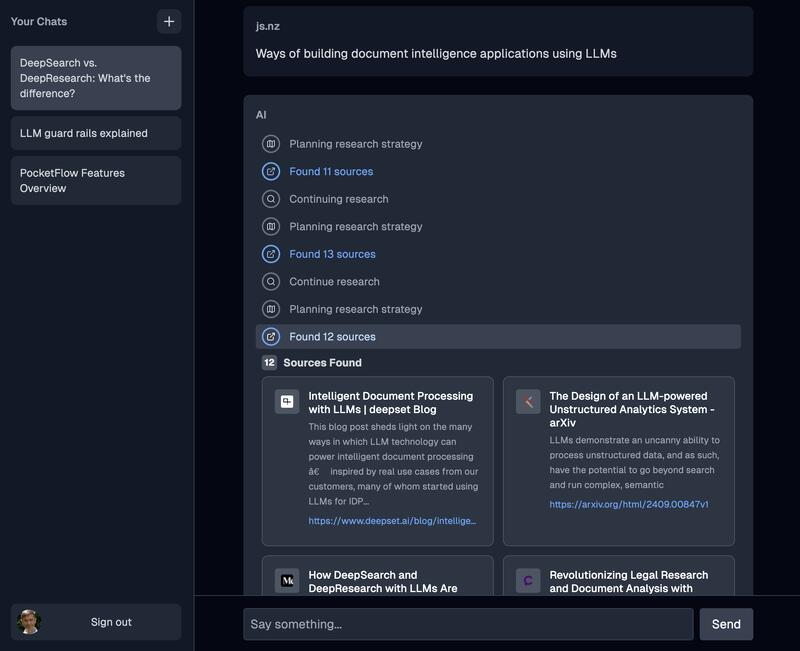
Deep Search Sources — Expandable showing sources scraped for detailed information.

Deep Search Research — Expandable showing LLM response with planned actions.
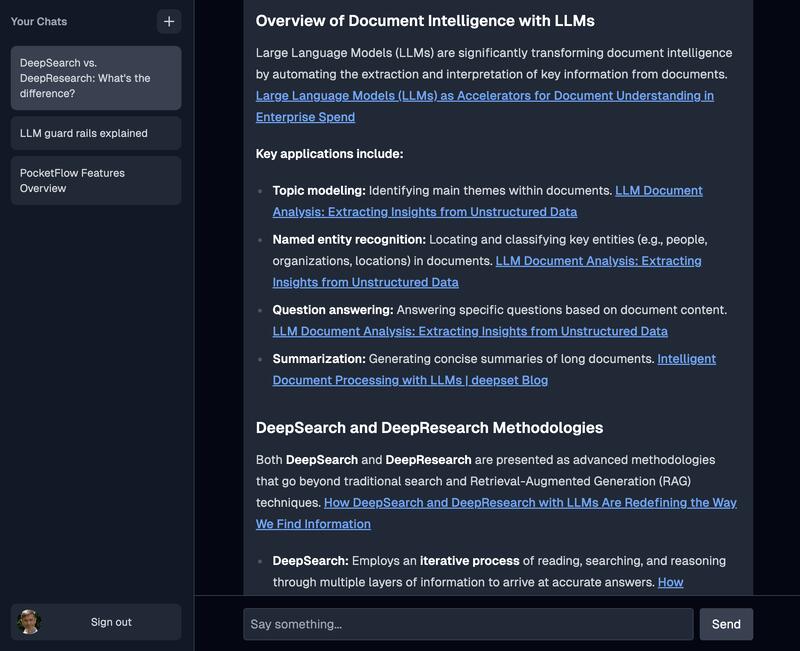
Deep Search Answer — Final answer with links for reference sources.
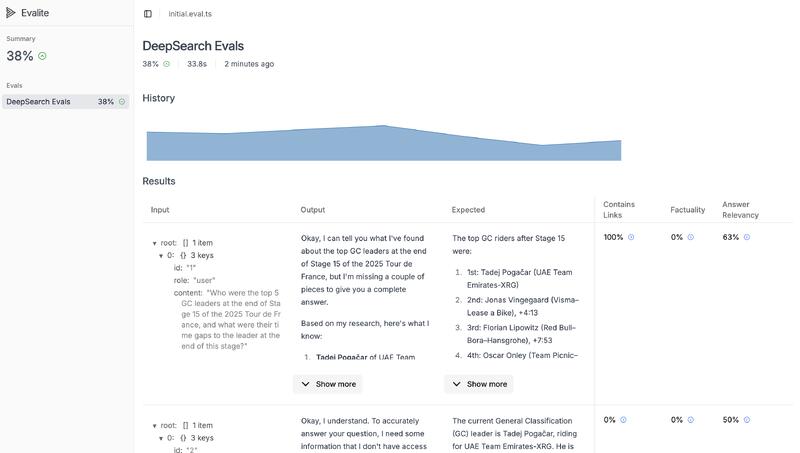
Deep Search Local Evals — Local evals run on your development server and make iteration quick and easy.

Deep Search Engineering Observability — Platform provides continuous observability with traces, evals and provides prompt management and metrics for continual improvement.
Darwinium: Making Fraud Networks Visible
The Problem: Fraud detection generates complex relationship graphs that are impossible to understand with standard dashboards. Analysts needed to explore network patterns in real-time, not just view static reports.
What I Built: Interactive network visualization and real-time dashboards that made fraud patterns explorable. Custom graph layouts, filtering, and grouping that revealed patterns hidden in the raw data.
Core Capabilities:
- Interactive network graphs with custom node types and relationships
- Real-time dashboard system with user-configurable layouts
- Geospatial visualization with Mapbox integration
- High-performance rendering for large-scale fraud networks
Stack: React, AntV (G6), Mapbox, GraphQL
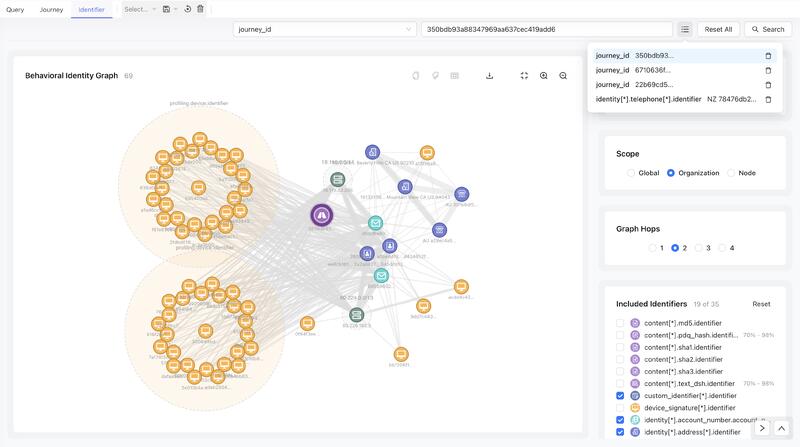
Identity Graph — Interactive Network Graphs with custom nodes, grouping, linking and filtering.
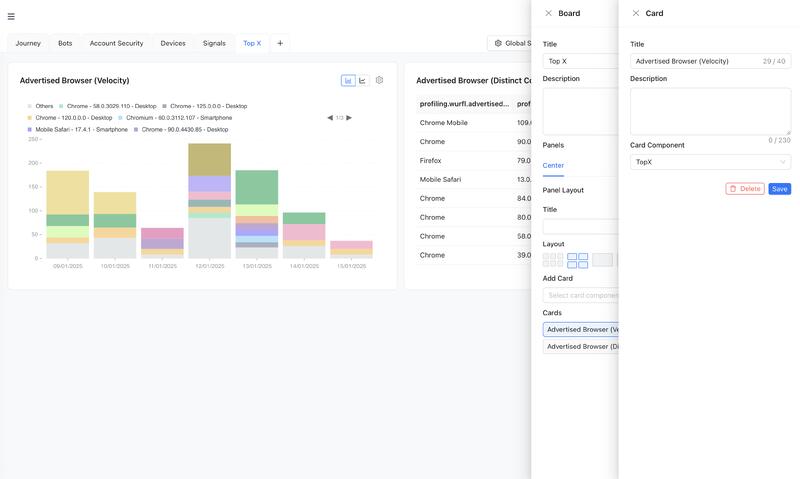
Dashboard Cards — Configurable cards allow selecting custom data rendering components for each card.
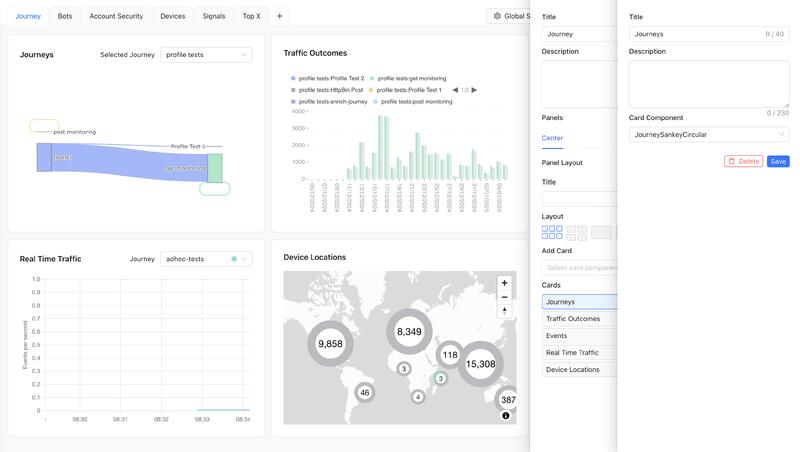
Dashboard Layout — Multiple dashboards are supported using tabs. Each dashboard has user configurable resizable panels and tab layouts. Panels have user configurable card layouts and card positioning.
Syft: Distributed Instrument Fleet Monitoring
The Problem: Mass spectrometry instruments deployed globally generated performance data that was invisible until failures occurred. Teams needed real-time visibility into instrument health across entire fleets.
What I Built: Real-time monitoring dashboard that ingested IoT data streams and surfaced instrument health patterns. Made distributed hardware infrastructure understandable through visual summaries and performance timelines.
Core Capabilities:
- Fleet-wide health visualization at a glance
- Real-time performance tracking for individual instruments
- IoT data ingestion and processing pipeline
- Context-aware help system tailored to customer configurations
Stack: React, Recoil, AntD, Python GraphQL, AWS IoT/data stack
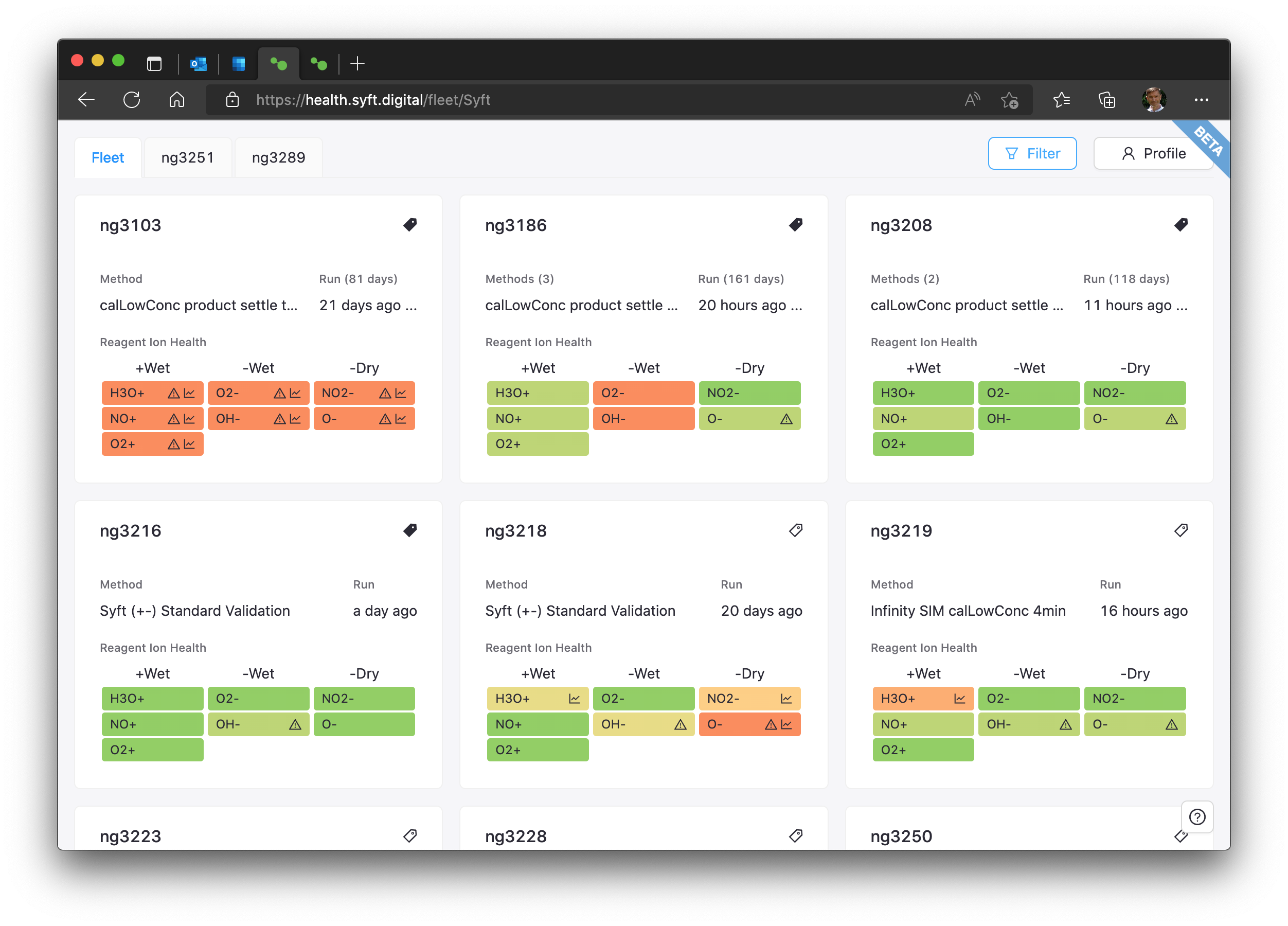
Instrument Fleet — Cards provide a quick visual overview of the health of all instruments deployed in the fleet.
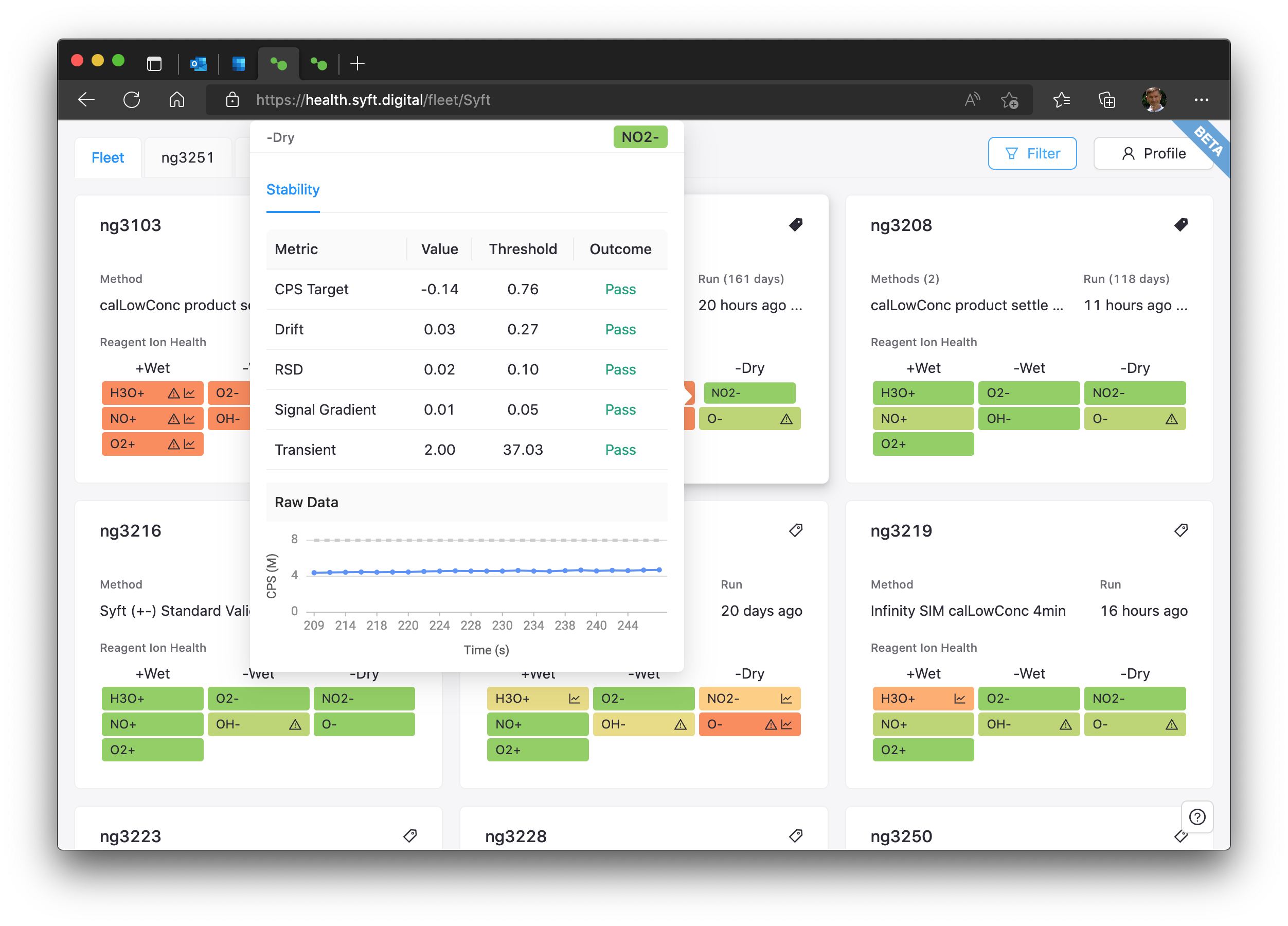
Instrument Quick View — Easily see more details for the reagent of a specific instrument from the fleet list view.
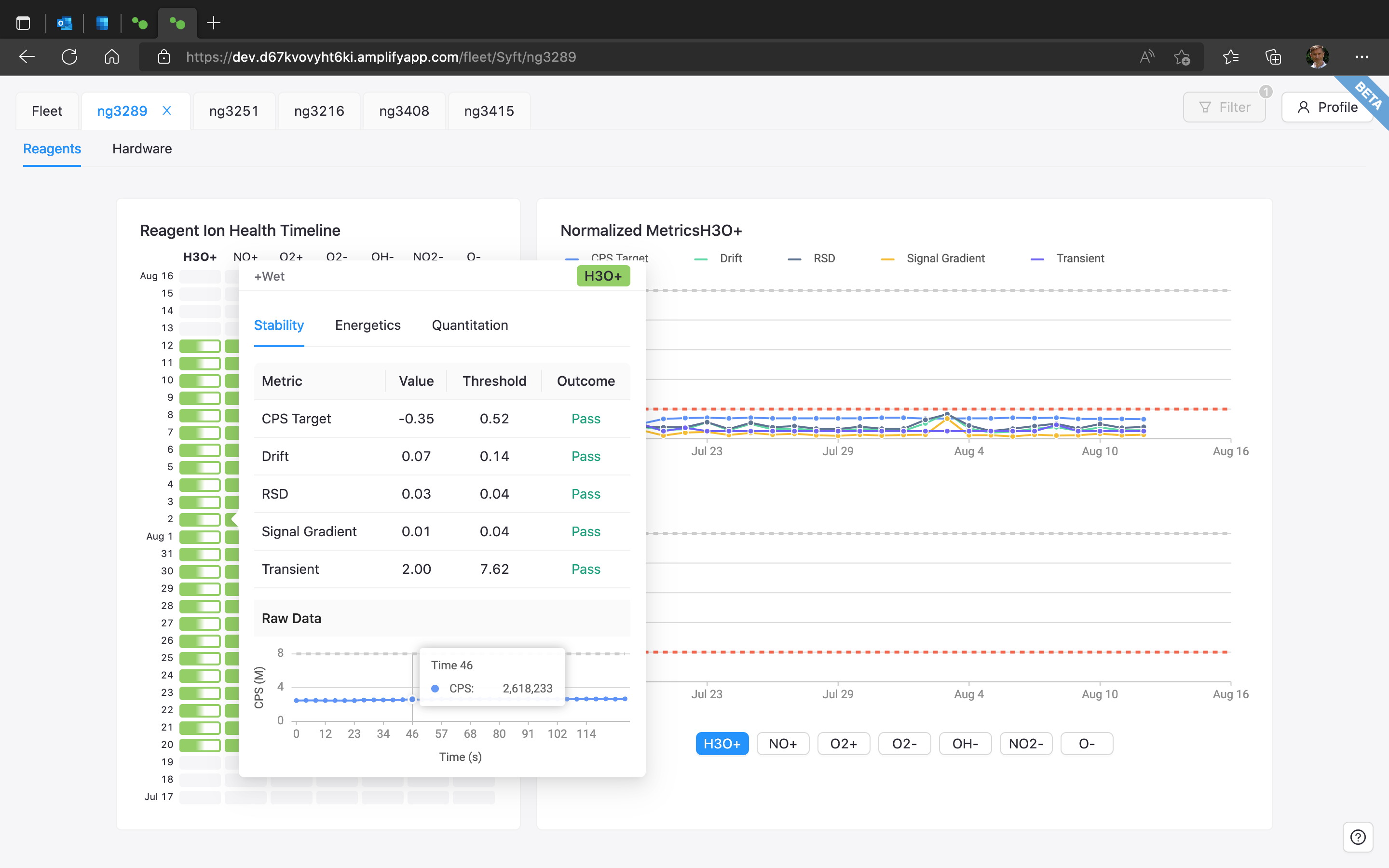
Instrument Details — Selecting an instrument from the fleet view opens a new instrument tab with performance timeline, detail for timeline segment, and hardware information.

Help Panel — Help information easily updated and tailed for specific customers, fleets and types of instrument.
Mersen R-TOOLS: Complex Engineering Simulation UX
The Problem: Heat sink design required running expensive thermal simulations that took minutes. Engineers needed an interface that made complex thermal engineering accessible while handling long-running compute workloads gracefully.
What I Built: Design and simulation tool that made thermal engineering approachable. Visual layout tools for heat sources and cooling systems, with async simulation handling that didn't block user workflow.
Core Capabilities:
- Visual design interface for complex thermal layouts
- Async simulation execution (minutes-long compute)
- Heat sink recommendation engine based on thermal requirements
- Non-blocking UX that allows parallel design work
Stack: React, Recoil, AntD, AWS (Lambda, EC2 simulation servers)
R-TOOLS MAXX Air and Liquid Cooled Heat Sink Selector Tool
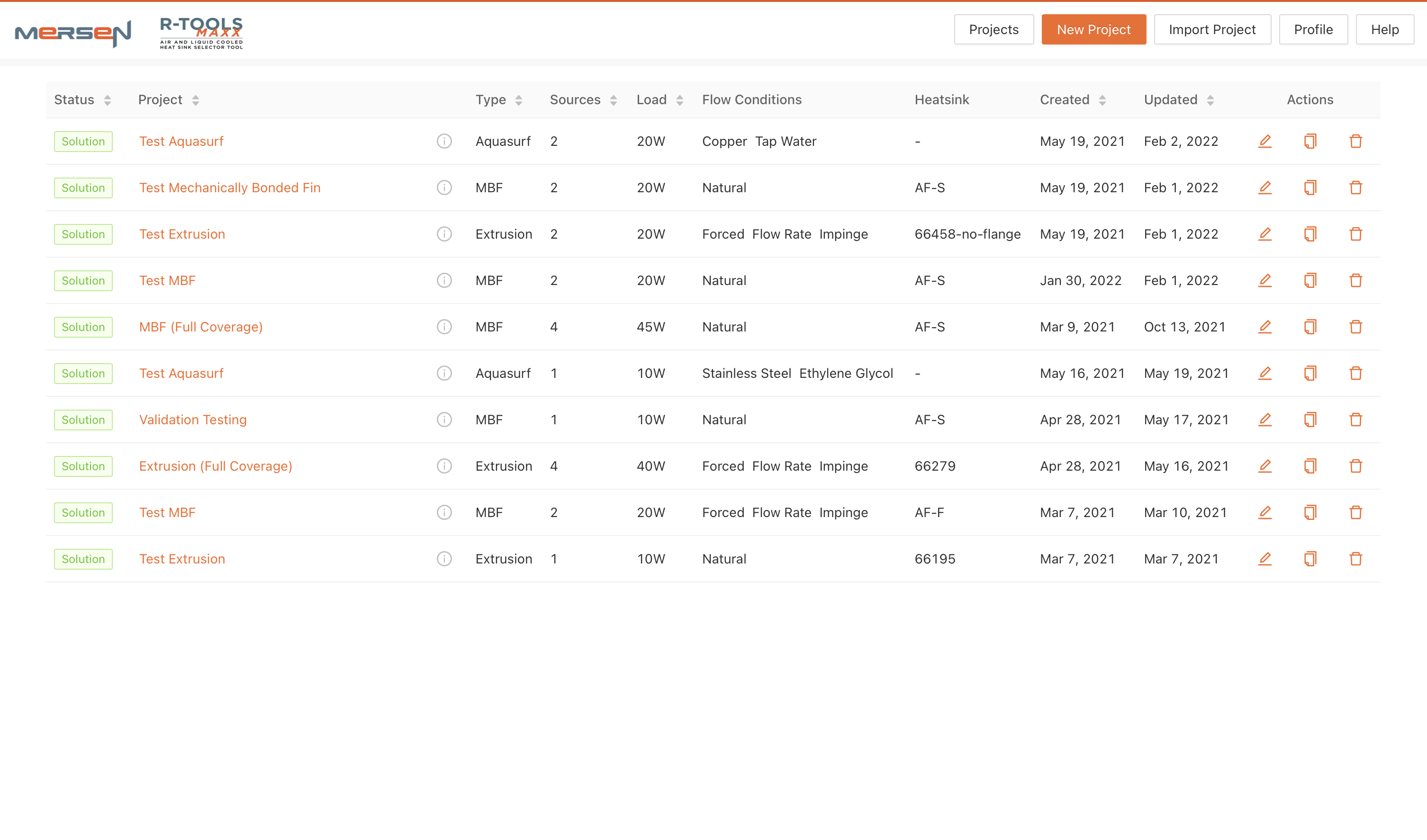
Projects List — List of all the user's designs and summary of key parameters
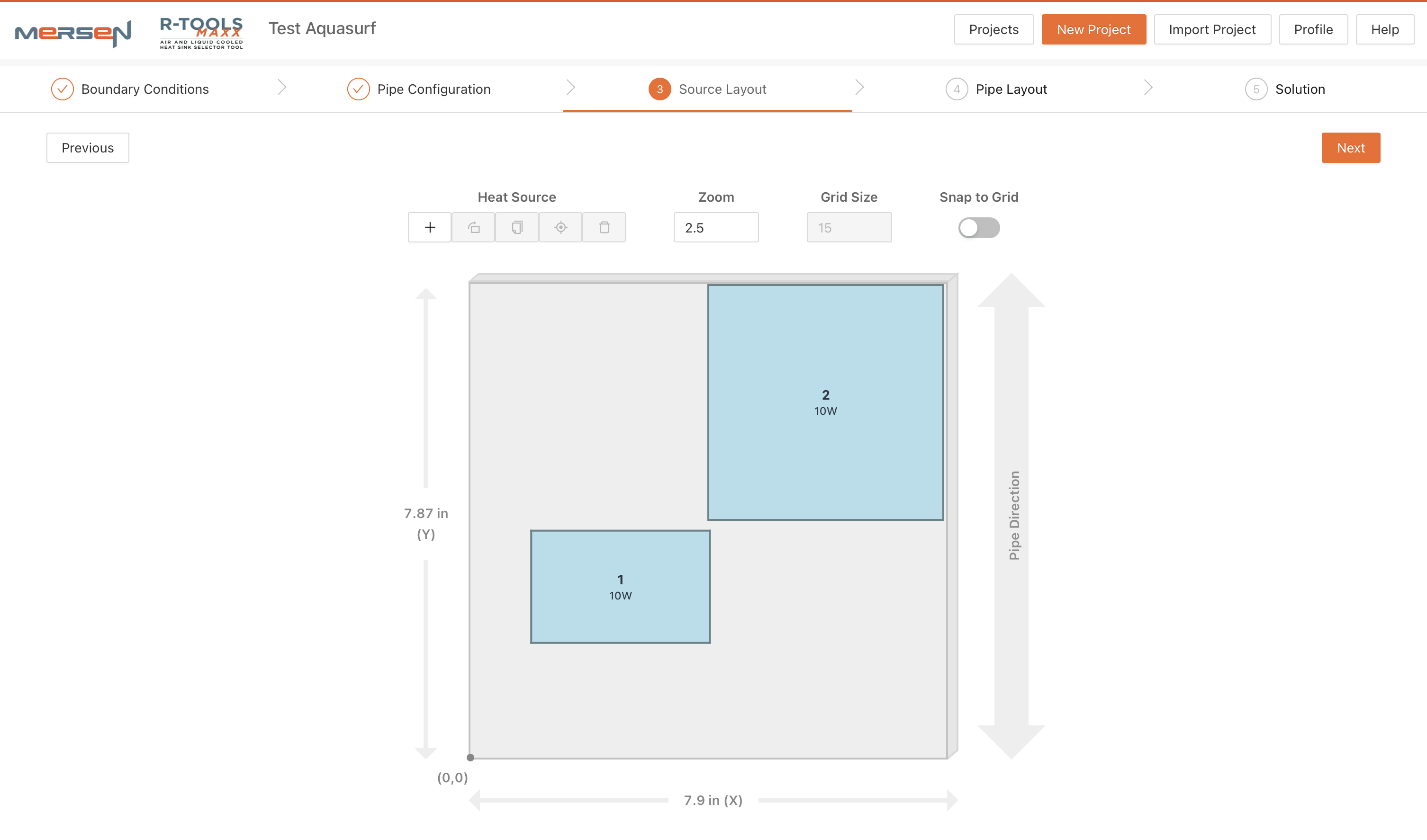
Heat Source Layout — Specify the size and parameters of heat sources, add and remove heat sources, drag to position.
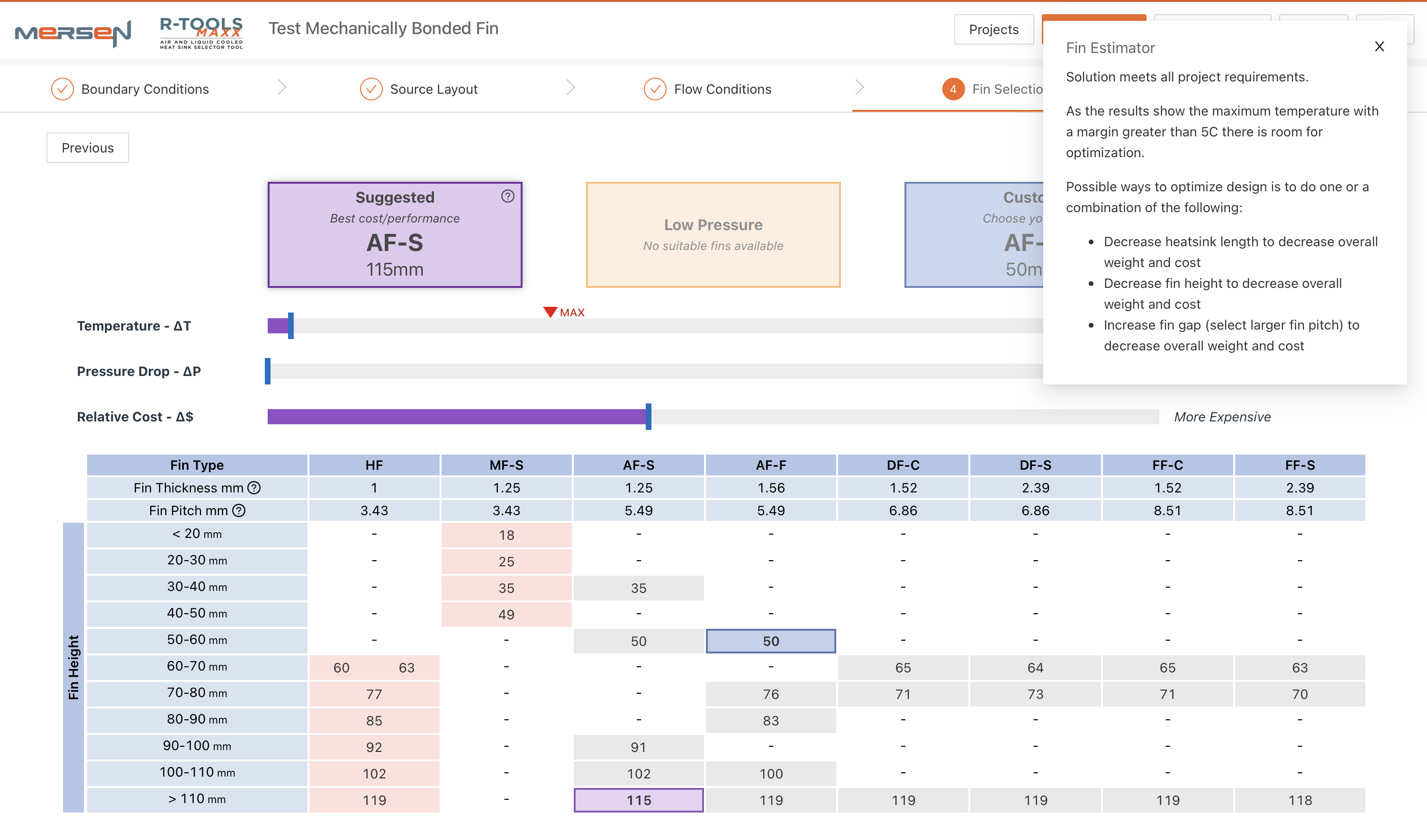
Mechanically Bonded Fin Selector — The fin selector recommends suitable heat sink extrusions from the specified the heat sources and flow conditions.
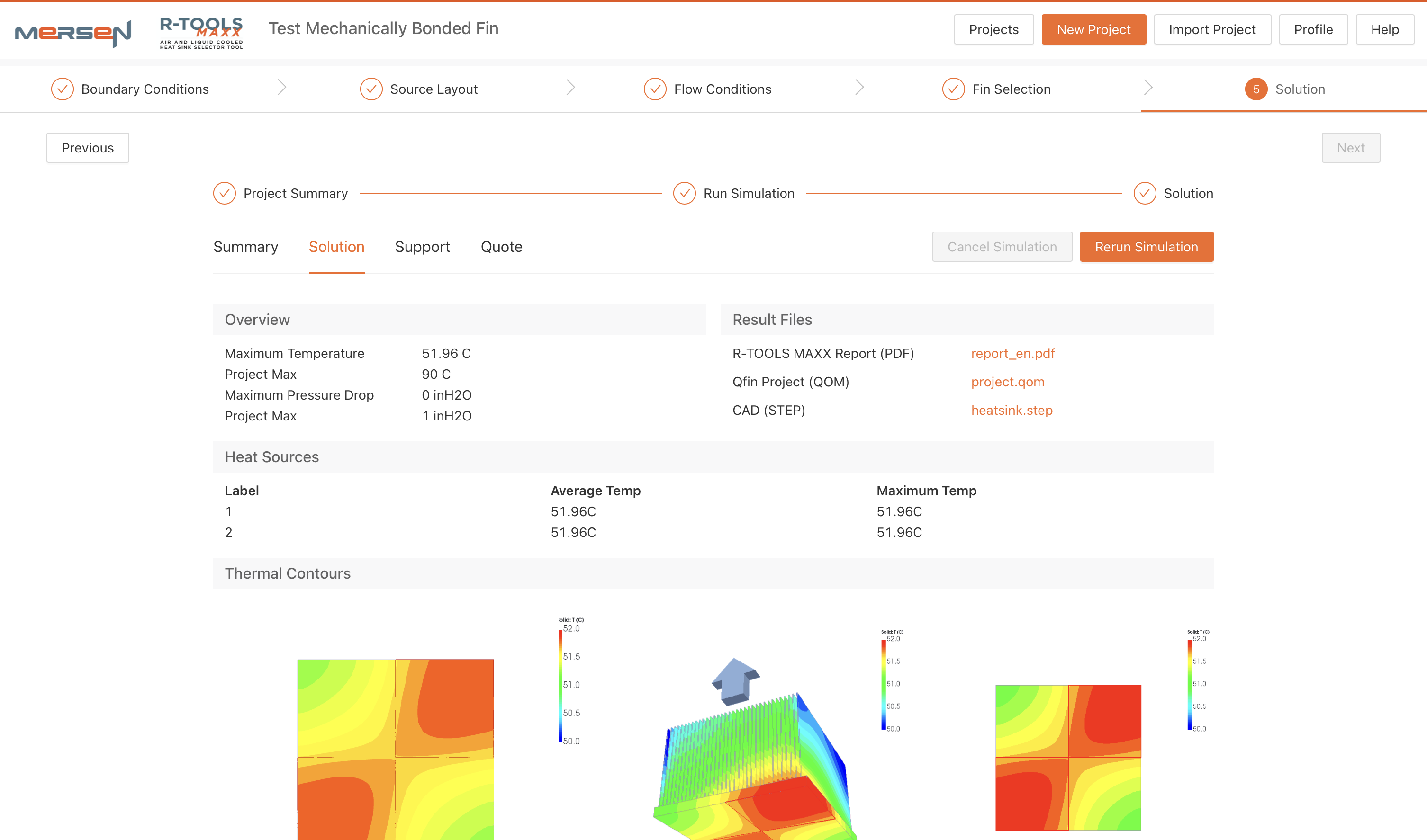
Mechanically Bonded Fin Thermal Simulation — Simulations run on separate EC2 servers and depending on the design complexity may take minutes to complete. Users can continue with other designs and come back to review the completed simulation.
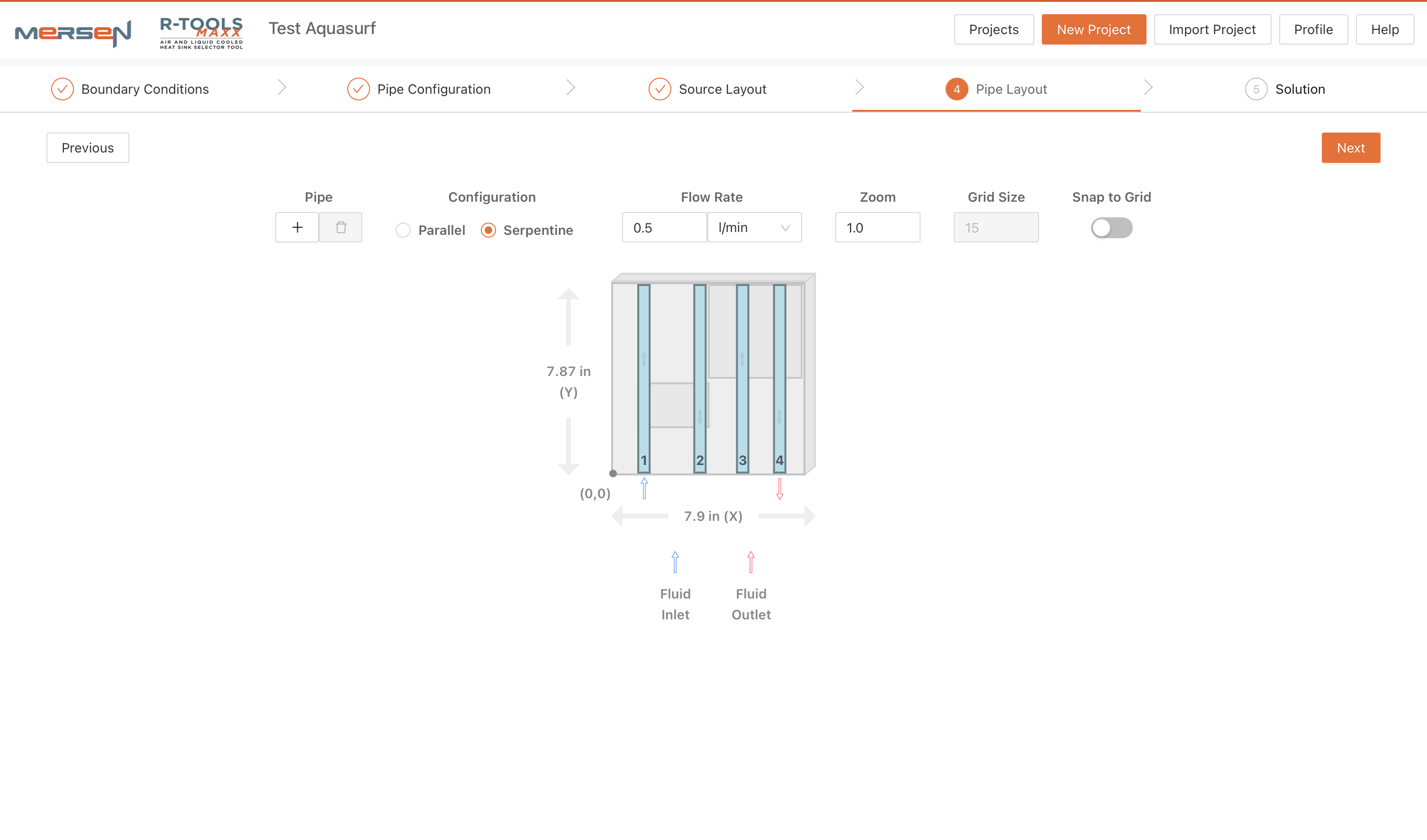
AquaFlow Pipe Layout — AquaFlow heatsinks have embedded coolant pipes in the heat sink base. Users can add and remove pipes, position them and set the flow direction.
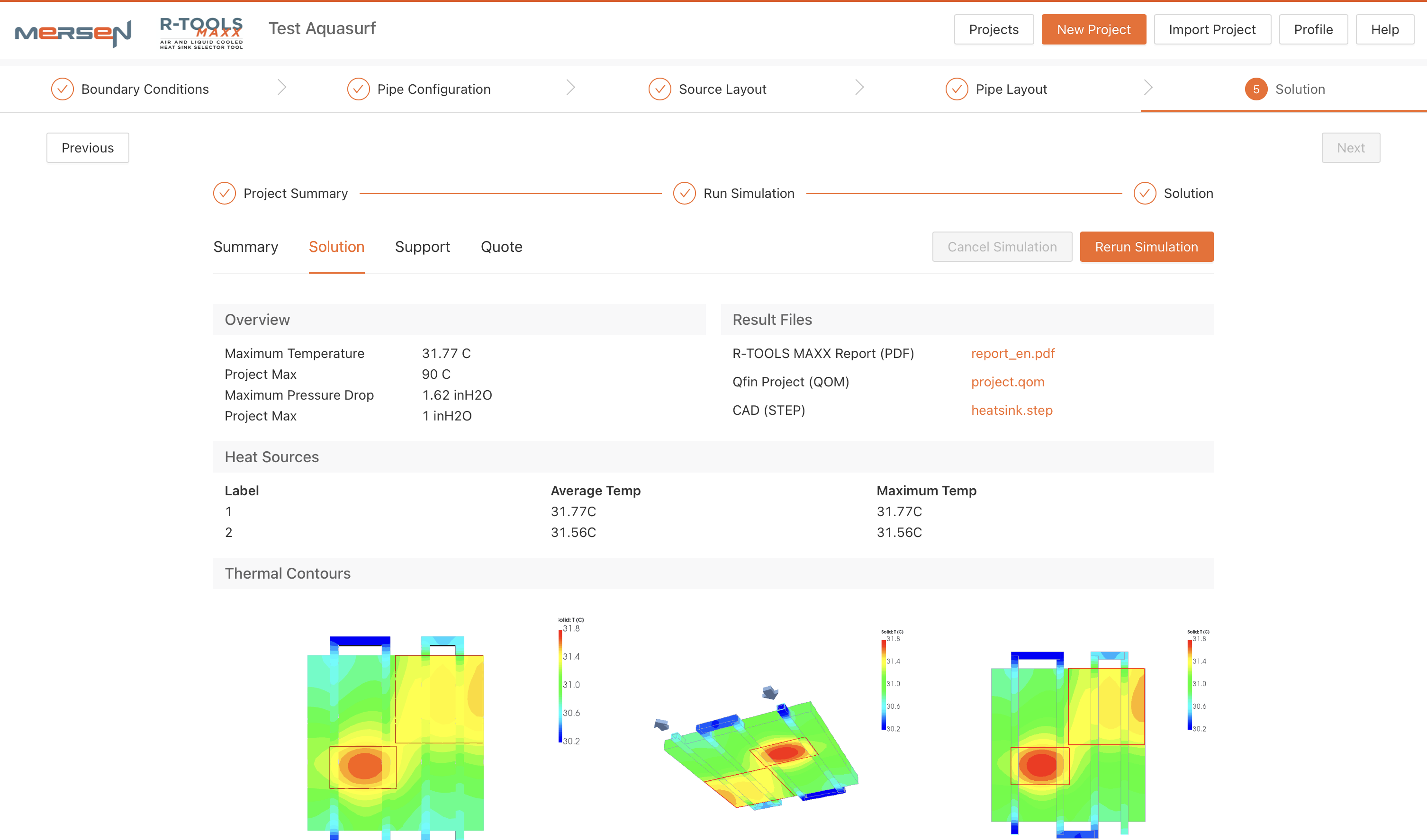
AquaFlow Thermal Simulation — Simulations run on separate EC2 servers and depending on the design complexity may take minutes to complete. Users can continue with other designs and come back to review the completed simulation.
Common Patterns
These projects share core characteristics:
- Complex systems made explorable through custom visualization
- Real-time or async data handled gracefully in the UX
- Technical depth in both frontend engineering and system architecture
- Bespoke solutions for problems off-the-shelf tools couldn't solve
Looking for someone to build something similar for your systems? Get in touch